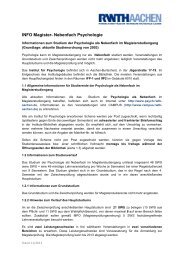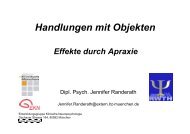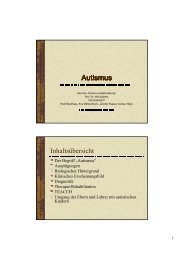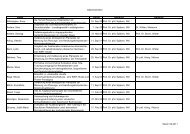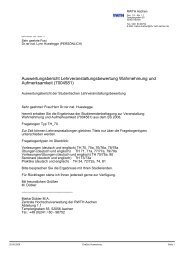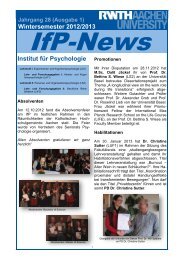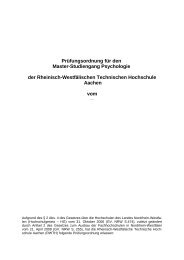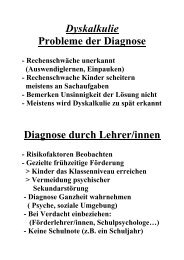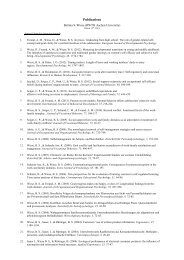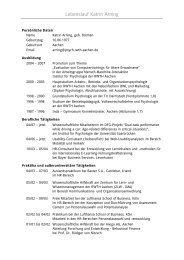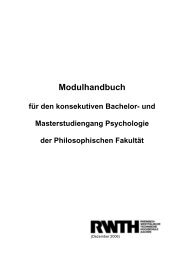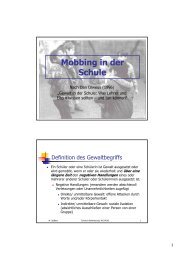Crossmodal Action 1 Crossmodal Action Selection - RWTH Aachen ...
Crossmodal Action 1 Crossmodal Action Selection - RWTH Aachen ...
Crossmodal Action 1 Crossmodal Action Selection - RWTH Aachen ...
You also want an ePaper? Increase the reach of your titles
YUMPU automatically turns print PDFs into web optimized ePapers that Google loves.
<strong>Crossmodal</strong> <strong>Action</strong> 6<br />
compared to dissimilar single-task RT levels (equivalent to relatively smaller temporal task<br />
overlap in dual-task conditions).<br />
Alternatively, more recent accounts of dual-task costs assume that central processing<br />
of both tasks can principally be accomplished in parallel (e.g., Meyer & Kieras, 1997; Navon<br />
& Miller, 2002; Tombu & Jolicoeur, 2003), attributing the typical PRP effect to the specific<br />
situation of sequential stimulus presentation in the PRP paradigm. According to these<br />
accounts, dual-task costs are due to strategic serial processing of tasks (like in the PRP<br />
paradigm), or another source of dual-task interference that may play a role during parallel<br />
processing of responses. More specifically, whenever two tasks with dimensional overlap<br />
(Kornblum, Hasbroucq, & Osman, 1990) are processed (e.g., when both tasks involve a<br />
left/right dimension), this leaves room for crosstalk to occur (Huestegge & Koch, 2009; Koch,<br />
2009; Navon & Miller, 1987). Contrary to the serial bottleneck account, a parallel crosstalk<br />
account would thus not necessarily predict pronounced differences in dual-task costs as a<br />
function of temporal task overlap in the dual-task paradigm as long as the source of crosstalk<br />
(e.g., spatially incompatible responses) within a trial remains constant.<br />
The present study was conducted to directly test these alternative (serial vs. parallel)<br />
accounts of response-related processes in multitasking by combining the strengths while<br />
avoiding the major drawbacks of both the PRP paradigm and the classic dual-task paradigm.<br />
To gain suitable control over stimulus-related processes, we implemented a single onset<br />
paradigm, in which two responses were not only triggered at the same time but also by a<br />
common stimulus (Fagot & Pashler, 1992). By using only one stimulus for both tasks we<br />
ensured that the perceptual analysis of the task-relevant feature is the same for both tasks and<br />
thus is completed for both tasks at the same time. To manipulate temporal task overlap in the<br />
dual-task conditions, we systematically varied the duration of the response selection stages via<br />
different spatial stimulus-response (S-R) mappings (e.g., Sanders, 1998) in the individual<br />
tasks. In the context of dual-task settings with two spatial tasks, the introduction of S-R



